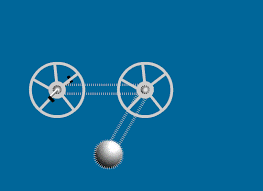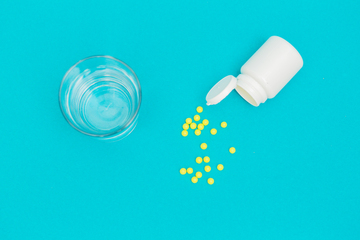We found 176 results that contain "notifiactions on and off"
Posted on: #iteachmsu


Travel and Photography and how it makes difference in someones life
So your friends got back from their annual jaunt abroad and you can contain your jealousy no more.
Or maybe you’re about to graduate, or have been let go from work.
Or maybe you’re about to graduate, or have been let go from work.
Pedagogical Design
Posted on: #iteachmsu


Science and technology
Science and technology is a topic that encompasses science, technology, and the interactions between the two. Science is a systematic enterprise that builds and organizes knowledge in the form of explanations and predictions about nature and the universe. Technology is the collection of techniques, methods or processes used in the production of goods or services or in the accomplishment of objectives, such as scientific investigation, or any other consumer demands.
Posted on: #iteachmsu


Social and Emotional Learning
This is a pathway about Social and Emotional Learning
PEDAGOGICAL DESIGN
Posted on: #iteachmsu

Triglycerides Triglycerides are fats and oils Fatty acid and glycerol molecules are the Edited
Triglycerides
Triglycerides are fats and oils
Fatty acid and glycerol molecules are the components that make up triglycerides
Fats and oils have a number of important functions in organisms: energy storage, insulation, buoyancy, and protection
Energy storage
The long hydrocarbon chains in triglycerides contain many carbon-hydrogen bonds with little oxygen (triglycerides are highly reduced)
So when triglycerides are oxidised during cellular respiration this causes these bonds to break releasing energy used to produce ATP
Triglycerides, therefore, store more energy per gram than carbohydrates and proteins (37kJ compared to 17kJ)
As triglycerides are hydrophobic they do not cause osmotic water uptake in cells so more can be stored
Plants store triglycerides, in the form of oils, in their seeds and fruits. If extracted from seeds and fruits these are generally liquid at room temperature due to the presence of double bonds which add kinks to the fatty acid chains altering their properties
Mammals store triglycerides as oil droplets in adipose tissue to help them survive when food is scarce (e.g. hibernating bears)
The oxidation of the carbon-hydrogen bonds releases large numbers of water molecules (metabolic water) during cellular respiration
Desert animals retain this water if there is no liquid water to drink
Bird and reptile embryos in their shells also use this water
Triglycerides are fats and oils
Fatty acid and glycerol molecules are the components that make up triglycerides
Fats and oils have a number of important functions in organisms: energy storage, insulation, buoyancy, and protection
Energy storage
The long hydrocarbon chains in triglycerides contain many carbon-hydrogen bonds with little oxygen (triglycerides are highly reduced)
So when triglycerides are oxidised during cellular respiration this causes these bonds to break releasing energy used to produce ATP
Triglycerides, therefore, store more energy per gram than carbohydrates and proteins (37kJ compared to 17kJ)
As triglycerides are hydrophobic they do not cause osmotic water uptake in cells so more can be stored
Plants store triglycerides, in the form of oils, in their seeds and fruits. If extracted from seeds and fruits these are generally liquid at room temperature due to the presence of double bonds which add kinks to the fatty acid chains altering their properties
Mammals store triglycerides as oil droplets in adipose tissue to help them survive when food is scarce (e.g. hibernating bears)
The oxidation of the carbon-hydrogen bonds releases large numbers of water molecules (metabolic water) during cellular respiration
Desert animals retain this water if there is no liquid water to drink
Bird and reptile embryos in their shells also use this water
NAVIGATING CONTEXT
Posted on: #iteachmsu


32-Core CPUs From Intel and AMD
In the following sections, we outline the basics of 15 upcoming technologies, with predictions on what may come of them. Some are breathing down our necks; some advances are still just out of reach.
Navigating Context
Posted on: Management is the p...


What is Management? Definition, Functions And Levels Explained -- edited
Companies and organisations need effective management to achieve business goals. There are different levels of management that aim to organise and coordinate the business functions of a company. If you're interested in becoming a manager, knowing about what a manager does can help you get an idea about the role. In this article, we discuss what management is and its unique characteristics, objectives, levels and functions. --- edited
PEDAGOGICAL DESIGN
Posted on: #iteachmsu

Monitoring and controlling
Embedded video URL
Posted by: Venturit Super Admin
Navigating Context
Posted on: #iteachmsu


Triglycerides Triglycerides are fats and oils Fatty acid and glycerol molecules are the Edited
Triglycerides
Triglycerides are fats and oils
Fatty acid and glycerol molecules are the components that make up triglycerides
Fats and oils have a number of important functions in organisms: energy storage, insulation, buoyancy, and protection
Energy storage
The long hydrocarbon chains in triglycerides contain many carbon-hydrogen bonds with little oxygen (triglycerides are highly reduced)
So when triglycerides are oxidised during cellular respiration this causes these bonds to break releasing energy used to produce ATP
Triglycerides, therefore, store more energy per gram than carbohydrates and proteins (37kJ compared to 17kJ)
As triglycerides are hydrophobic they do not cause osmotic water uptake in cells so more can be stored
Plants store triglycerides, in the form of oils, in their seeds and fruits. If extracted from seeds and fruits these are generally liquid at room temperature due to the presence of double bonds which add kinks to the fatty acid chains altering their properties
Mammals store triglycerides as oil droplets in adipose tissue to help them survive when food is scarce (e.g. hibernating bears)
The oxidation of the carbon-hydrogen bonds releases large numbers of water molecules (metabolic water) during cellular respiration
Desert animals retain this water if there is no liquid water to drink
Bird and reptile embryos in their shells also use this water
Triglycerides are fats and oils
Fatty acid and glycerol molecules are the components that make up triglycerides
Fats and oils have a number of important functions in organisms: energy storage, insulation, buoyancy, and protection
Energy storage
The long hydrocarbon chains in triglycerides contain many carbon-hydrogen bonds with little oxygen (triglycerides are highly reduced)
So when triglycerides are oxidised during cellular respiration this causes these bonds to break releasing energy used to produce ATP
Triglycerides, therefore, store more energy per gram than carbohydrates and proteins (37kJ compared to 17kJ)
As triglycerides are hydrophobic they do not cause osmotic water uptake in cells so more can be stored
Plants store triglycerides, in the form of oils, in their seeds and fruits. If extracted from seeds and fruits these are generally liquid at room temperature due to the presence of double bonds which add kinks to the fatty acid chains altering their properties
Mammals store triglycerides as oil droplets in adipose tissue to help them survive when food is scarce (e.g. hibernating bears)
The oxidation of the carbon-hydrogen bonds releases large numbers of water molecules (metabolic water) during cellular respiration
Desert animals retain this water if there is no liquid water to drink
Bird and reptile embryos in their shells also use this water
Posted by: Venturit Super Admin
Navigating Context
Posted on: Management is the p...


What is Management? Definition, Functions And Levels Explained
Companies and organisations need effective management to achieve business goals. There are different levels of management that aim to organise and coordinate the business functions of a company. If you're interested in becoming a manager, knowing about what a manager does can help you get an idea about the role. In this article, we discuss what management is and its unique characteristics, objectives, levels and functions.
Posted by: Scarlet Ethan Edien
Disciplinary Content
Posted on: Edited -- The Compl...


Edited -- gym workout for fat loss and muscle gain
Edited -- To effectively lose fat and gain muscle at the gym, focus on a combination of strength training, cardio, and a balanced diet. Aim for at least two strength training sessions per week, incorporating exercises that work all major muscle groups, and include some cardio to burn calories.
Strength Training:
Full-Body Workouts:
Prioritize compound exercises like squats, deadlifts, lunges, push-ups, and rows, which work multiple muscle groups simultaneously, leading to greater calorie burn and muscle growth.
Squats: Target the lower body and core, building strength and power.
Deadlifts: A powerful exercise for the entire posterior chain, including glutes, hamstrings, and back, boosting strength and metabolism.
Lunges: Engage the legs and glutes, improving balance and stability.
Push-ups: Work the chest, shoulders, and triceps, building upper body strength and endurance.
Rows: Focus on the back and biceps, promoting a balanced physique.
Progressive Overload:
Gradually increase the weight, reps, or sets you lift each week to challenge your muscles and promote growth.
Rest and Recovery:
Allow adequate rest between workouts to allow muscles to repair and rebuild.
Cardiovascular Exercise:
Moderate-Intensity Cardio:
Incorporate activities like brisk walking, jogging, cycling, or swimming for 30-60 minutes most days of the week to burn calories and improve cardiovascular health.
High-Intensity Interval Training (HIIT):
Alternate short bursts of intense exercise with periods of rest or lower-intensity exercise to maximize calorie burn in a shorter time frame.
Examples of HIIT:
Burpees, mountain climbers, and kettlebell swings are great options for HIIT workouts.
Nutrition:
Calorie Deficit: Consume fewer calories than you burn to promote fat loss.
Protein Intake: Ensure adequate protein intake to support muscle growth and repair.
Balanced Diet: Focus on whole, unprocessed foods, including lean protein, complex carbohydrates, and healthy fats.
Hydration: Drink plenty of water throughout the day to support overall health and performance.
Strength Training:
Full-Body Workouts:
Prioritize compound exercises like squats, deadlifts, lunges, push-ups, and rows, which work multiple muscle groups simultaneously, leading to greater calorie burn and muscle growth.
Squats: Target the lower body and core, building strength and power.
Deadlifts: A powerful exercise for the entire posterior chain, including glutes, hamstrings, and back, boosting strength and metabolism.
Lunges: Engage the legs and glutes, improving balance and stability.
Push-ups: Work the chest, shoulders, and triceps, building upper body strength and endurance.
Rows: Focus on the back and biceps, promoting a balanced physique.
Progressive Overload:
Gradually increase the weight, reps, or sets you lift each week to challenge your muscles and promote growth.
Rest and Recovery:
Allow adequate rest between workouts to allow muscles to repair and rebuild.
Cardiovascular Exercise:
Moderate-Intensity Cardio:
Incorporate activities like brisk walking, jogging, cycling, or swimming for 30-60 minutes most days of the week to burn calories and improve cardiovascular health.
High-Intensity Interval Training (HIIT):
Alternate short bursts of intense exercise with periods of rest or lower-intensity exercise to maximize calorie burn in a shorter time frame.
Examples of HIIT:
Burpees, mountain climbers, and kettlebell swings are great options for HIIT workouts.
Nutrition:
Calorie Deficit: Consume fewer calories than you burn to promote fat loss.
Protein Intake: Ensure adequate protein intake to support muscle growth and repair.
Balanced Diet: Focus on whole, unprocessed foods, including lean protein, complex carbohydrates, and healthy fats.
Hydration: Drink plenty of water throughout the day to support overall health and performance.
Authored by: Vijaya mhetre
Justice and Belonging
Posted on: #iteachmsu


Why are my cholesterol numbers important? -- Additionally added and edited
Your cholesterol numbers are important because they help you know your risk for heart disease. Cholesterol is a type of lipid (fat) that helps your body perform many important functions. But too much cholesterol in your blood is bad for you. It can enter your artery wall, damage its integrity and lead to the formation of atherosclerotic plaque (hardened deposits).
This process of plaque buildup is called atherosclerosis. It can lead to serious problems like:
Coronary artery disease: Blocked blood flow to your heart.
Peripheral artery disease: Blocked blood flow to your legs and arms.
Carotid artery disease: Blocked blood flow to your brain.
Cholesterol travels through your blood silently. And it turns into plaque silently. Plaque buildup is like someone tip-toeing on carpet. You might not see or notice its presence for a long time. You may have no symptoms until you have a heart attack or stroke. At that point, the plaque is like high heels on a hardwood floor. And it’s already caused serious damage to your body.
You can live for many years with high cholesterol and not even know it. That’s why it’s essential to get your cholesterol numbers checked on a regular basis. If your cholesterol numbers are too high (hyperlipidemia), that’s a red flag for you and your healthcare provider. High cholesterol is a major risk factor for heart disease. But catching it early gives you a chance to make changes and get your cholesterol to a healthy level.
This process of plaque buildup is called atherosclerosis. It can lead to serious problems like:
Coronary artery disease: Blocked blood flow to your heart.
Peripheral artery disease: Blocked blood flow to your legs and arms.
Carotid artery disease: Blocked blood flow to your brain.
Cholesterol travels through your blood silently. And it turns into plaque silently. Plaque buildup is like someone tip-toeing on carpet. You might not see or notice its presence for a long time. You may have no symptoms until you have a heart attack or stroke. At that point, the plaque is like high heels on a hardwood floor. And it’s already caused serious damage to your body.
You can live for many years with high cholesterol and not even know it. That’s why it’s essential to get your cholesterol numbers checked on a regular basis. If your cholesterol numbers are too high (hyperlipidemia), that’s a red flag for you and your healthcare provider. High cholesterol is a major risk factor for heart disease. But catching it early gives you a chance to make changes and get your cholesterol to a healthy level.
Authored by: Vijaya
Navigating Context
Posted on: Introduce Books, St...


Books play a vital role in both brain development and language skills. ---- Edited
Introduce Books, Storytelling And Narration --- EditedBooks play a vital role in both brain development and language skills. They’re also the first step towards gross motor skill development (holding books, turning pages). I had introduced cloth books & soft sponge books to her when she was two months old, board books from five months, and paper books after she turned a year old. She liked colourful objects, animals, birds & shapes till around nine months and then loved listening to simple short stories from illustrated books (no fairy tales). And activity books (match the shadows, pairing similar objects) after she turned 2.3. Ask Questions To Stimulate The Thinking ProcessAs I introduced the books, I named the objects she was seeing in all the languages I knew. Then I gradually started describing them (shape, colour, use). I explained the environment in which they are found and constantly asked her questions. For example, pointing at a rabbit, instead of asking “what is this?” I asked her, “it has long ears, a short fluffy tail, is soft & white like cotton. What is it?”. I continued with the exercise even when we went out to some shop or mall. We played the “I spy” game in the house & outdoors. I would describe objects and ask her to identify them. It was fun.4. Let Your Kids Explore - Touch, Feel, Smell, TasteI encouraged the natural tendency that kids have to explore the world around them. (But of course, with discretion). I never stopped her from playing with stones or mud in the garden, things like tasting sour lime or bitter gourd, smell a flower on the plant, etc. She learned by herself that stones were hard, mud was soft, ice was cold, the paper could be torn with hands and rubber bands were elastic & so on. Things that were not safe for her we explained to her & kept out of reach- like touching a hot cup of tea could burn her skin, pressing against a glass door could break the glass, playing with a sharp object could hurt, etc.
Name
Role
Chathuri
Project Manager
Rohit
Developer
Vijaya
QA
Name
Role
Chathuri
Project Manager
Rohit
Developer
Vijaya
QA
Posted by: Venturit Super Admin
Disciplinary Content
Posted on: Smoke test group by...


Edited: Natural disasters can have devastating consequences, including: Loss of life and injury:
Natural disasters can have devastating consequences, including:
Loss of life and injury:
Human casualties are a tragic outcome of many natural disasters.
Property damage:
Buildings, infrastructure, and personal belongings can be destroyed or damaged.
Economic disruption:
Disasters can disrupt local economies, causing significant financial losses.
Environmental damage:
Natural disasters can lead to habitat destruction, pollution, and other environmental problems.
Importance of Preparedness:
While natural disasters are inevitable, being prepared can significantly reduce their impact:
Early warning systems: Timely warnings allow communities to evacuate and take necessary precautions.
Building codes and regulations: Stronger infrastructure can better withstand natural hazards.
Community awareness and education: Educating the public about disaster preparedness is crucial.
Emergency response plans: Having well-defined plans for responding to disasters can save lives and minimize damage.
Loss of life and injury:
Human casualties are a tragic outcome of many natural disasters.
Property damage:
Buildings, infrastructure, and personal belongings can be destroyed or damaged.
Economic disruption:
Disasters can disrupt local economies, causing significant financial losses.
Environmental damage:
Natural disasters can lead to habitat destruction, pollution, and other environmental problems.
Importance of Preparedness:
While natural disasters are inevitable, being prepared can significantly reduce their impact:
Early warning systems: Timely warnings allow communities to evacuate and take necessary precautions.
Building codes and regulations: Stronger infrastructure can better withstand natural hazards.
Community awareness and education: Educating the public about disaster preparedness is crucial.
Emergency response plans: Having well-defined plans for responding to disasters can save lives and minimize damage.
Posted by: Scarlet Ethan Edien
Navigating Context
Posted on: #iteachmsu


Smoke test article, What is causing my back pain, and how can I remedy it? -- edited
Common causesTrusted Source of back pain include:
Strains and sprains
Strains are injuries to muscles or tendons, while sprains affect the ligaments. Examples of movements that could lead to one of these injuries include:
pushing, pulling, lifting, or carrying something
bending over
twisting the spine abruptly
coughing or sneezing
Other types of injury that can causeTrusted Source back pain include whiplash and fractures.
Learn the difference between a sprain and a strain.
Posture
Posture refers to how a person holds themselves when sitting or standing. Over time, some postures can leadTrusted Source to pain.
Examples of postures that may eventually cause pain include:
forward head posture, which is when the head juts forward over the spine
slouching, which involves sitting or standing with rounded shoulders
hyperlordosis, which is when the hips tilt forward, arching the lower back
Everyday activities can also mean a person adopts an unhealthy posture for prolonged periods. Examples include:
driving
using a laptop or computer that is too low down
sitting in chairs or on couches that do not support the back
sleeping on an unsupportive mattress
Learn more about different types of posture.
Structural problems
Some structural problems of the spine may also result in back pain. These can includeTrusted Source:
Ruptured disks: Disks cushion each vertebra in the spine. If the disk ruptures, it exerts more pressure on a nerve, resulting in back pain. Sometimes, this pain may travel through the buttock and down the back of a leg. This is known as sciatica.
Bulging disks: Similarly, a disk that bulges from its place between the bones can put pressure on a nerve. Sometimes, this may also result in sciatica.
Arthritis: Osteoarthritis can cause problems with the joints in the hips, lower back, and other areas of the body. Sometimes, the space around the spinal cord narrows. Health experts call this spinal stenosis.
Osteoporosis: This causes the bones to become brittle and porous. When this leads to fractures, osteoporosis may cause back pain.
Curvature of the spine: Back pain can occur if the spine curves too much. An example is scoliosis, in which the spine curves to the side.
Other causes
Other factors that may lead to back pain include:
kidney stones
menstrual cramps
endometriosis
pregnancy
infections of the spine, bladder, kidneys, or reproductive system
shingles, which lies dormant in nerves and can reactivate, causing a painful rash along the nerve path
cauda equina syndrome
cancer of the spine
Strains and sprains
Strains are injuries to muscles or tendons, while sprains affect the ligaments. Examples of movements that could lead to one of these injuries include:
pushing, pulling, lifting, or carrying something
bending over
twisting the spine abruptly
coughing or sneezing
Other types of injury that can causeTrusted Source back pain include whiplash and fractures.
Learn the difference between a sprain and a strain.
Posture
Posture refers to how a person holds themselves when sitting or standing. Over time, some postures can leadTrusted Source to pain.
Examples of postures that may eventually cause pain include:
forward head posture, which is when the head juts forward over the spine
slouching, which involves sitting or standing with rounded shoulders
hyperlordosis, which is when the hips tilt forward, arching the lower back
Everyday activities can also mean a person adopts an unhealthy posture for prolonged periods. Examples include:
driving
using a laptop or computer that is too low down
sitting in chairs or on couches that do not support the back
sleeping on an unsupportive mattress
Learn more about different types of posture.
Structural problems
Some structural problems of the spine may also result in back pain. These can includeTrusted Source:
Ruptured disks: Disks cushion each vertebra in the spine. If the disk ruptures, it exerts more pressure on a nerve, resulting in back pain. Sometimes, this pain may travel through the buttock and down the back of a leg. This is known as sciatica.
Bulging disks: Similarly, a disk that bulges from its place between the bones can put pressure on a nerve. Sometimes, this may also result in sciatica.
Arthritis: Osteoarthritis can cause problems with the joints in the hips, lower back, and other areas of the body. Sometimes, the space around the spinal cord narrows. Health experts call this spinal stenosis.
Osteoporosis: This causes the bones to become brittle and porous. When this leads to fractures, osteoporosis may cause back pain.
Curvature of the spine: Back pain can occur if the spine curves too much. An example is scoliosis, in which the spine curves to the side.
Other causes
Other factors that may lead to back pain include:
kidney stones
menstrual cramps
endometriosis
pregnancy
infections of the spine, bladder, kidneys, or reproductive system
shingles, which lies dormant in nerves and can reactivate, causing a painful rash along the nerve path
cauda equina syndrome
cancer of the spine
Authored by: Shravya
Assessing Learning
Posted on: Management is the p...

Companies and organisations need effective management to achieve business goals. There are different levels of management that aim to organise and coordinate the business functions of a company. If you're interested in becoming a manager, knowing about what a manager does can help you get an idea about the role. In this article, we discuss what management is and its unique characteristics, objectives, levels and functions.
Posted by: Swara mhetre
Pedagogical Design
Posted on: Management is the p...


Companies and organisations need effective management to achieve business goals. There are different levels of management that aim to organise and coordinate the business functions of a company. If you're interested in becoming a manager, knowing about what a manager does can help you get an idea about the role. In this article, we discuss what management is and its unique characteristics, objectives, levels and functions. --- edited
Posted by: Scarlet Ethan Edien
Pedagogical Design
Posted on: Wireframes-- edited

Edited--Wireframes are basic blueprints that help teams align on requirements, keeping UX design conversations focused and constructive. Think of your wireframe as the skeleton of your app, website, or other final product. Your wireframe shows the design team and stakeholders the bare-bones outlines of essential webpages, components, and features, including:
Screen layouts
Navigation bars
Components of UX and UI design
Interactive elements
At the early stages of design, low-fidelity wireframes rely on lorem ipsum text and simple boxes as placeholders for images and videos. This helps the design team, copywriters, and other team members to focus on basic functionality to align around the right direction.
Starting with a clean, spare wireframe design also gives UI/UX designers room to iterate. They can collect early feedback from user testing on core UX/UI elements, without distracting users with visual design details. Design teams try out different concepts, user flows, and templates as they work toward the ultimate user experience.
Screen layouts
Navigation bars
Components of UX and UI design
Interactive elements
At the early stages of design, low-fidelity wireframes rely on lorem ipsum text and simple boxes as placeholders for images and videos. This helps the design team, copywriters, and other team members to focus on basic functionality to align around the right direction.
Starting with a clean, spare wireframe design also gives UI/UX designers room to iterate. They can collect early feedback from user testing on core UX/UI elements, without distracting users with visual design details. Design teams try out different concepts, user flows, and templates as they work toward the ultimate user experience.
Posted by: Derek Matin 935
Justice and Belonging
Posted on: Try to leave negati...


Practice Gratitude
This final tip is the easiest one of all: be grateful! Try to leave negativity at the door and focus on all the good things you do have. It’s been shown that positive people live longer. Just like a healthy diet, filling your life with positive people, thoughts and things can have long-lasting positive impacts on your longevity. -- edited
This final tip is the easiest one of all: be grateful! Try to leave negativity at the door and focus on all the good things you do have. It’s been shown that positive people live longer. Just like a healthy diet, filling your life with positive people, thoughts and things can have long-lasting positive impacts on your longevity. -- edited
Posted by: Derek Matin 935
Posted on: #iteachmsu

Keep Regular Doctor Appointments
No one likes going to the doctor, but it’s important to schedule regular screenings and physicals as you age. If you have a consistent pain or something just doesn’t feel right, make an appointment with your primary care physician to rule out anything serious. Your relationship with your doctor should be open and honest to ensure you get the best care possible.-- edited
Practice Gratitude
This final tip is the easiest one of all: be grateful! Try to leave negativity at the door and focus on all the good things you do have. It’s been shown that positive people live longer. Just like a healthy diet, filling your life with positive people, thoughts and things can have long-lasting positive impacts on your longevity.
No one likes going to the doctor, but it’s important to schedule regular screenings and physicals as you age. If you have a consistent pain or something just doesn’t feel right, make an appointment with your primary care physician to rule out anything serious. Your relationship with your doctor should be open and honest to ensure you get the best care possible.-- edited
Practice Gratitude
This final tip is the easiest one of all: be grateful! Try to leave negativity at the door and focus on all the good things you do have. It’s been shown that positive people live longer. Just like a healthy diet, filling your life with positive people, thoughts and things can have long-lasting positive impacts on your longevity.
Posted by: Venturit Super Admin
Navigating Context
Posted on: Jmeter Load testing


Edited -- Divide the total number of users by the desired duration to determine the ramp-up rate. For example:
If you want to ramp up 100 users evenly over 1 minute:
Ramp-Up Period = Total number of users / Desired duration
= 100 users / 1 minute
= 100 users/minute
In this case, each user would start every 0.01 minutes (or every 0.6 seconds).
If you want to ramp up 100 users evenly over 5 minutes:
Ramp-Up Period = Total number of users / Desired duration
= 100 users / 5 minutes
= 20 users/minute
In this case, each user would start every 0.05 minutes (or every 3 seconds).
Consider Realistic Scenarios:
While evenly distributing users is a common approach, consider if it reflects the real-world usage pattern of your application. Sometimes, you might want to simulate a more gradual or sudden increase in load to mimic how users interact with the system.
Test Iteratively and Adjust as Needed:
It's essential to iterate on your load tests, adjusting parameters like the ramp-up period based on initial results. This iterative process helps refine the test plan to better simulate real-world scenarios and uncover performance bottlenecks.
If you want to ramp up 100 users evenly over 1 minute:
Ramp-Up Period = Total number of users / Desired duration
= 100 users / 1 minute
= 100 users/minute
In this case, each user would start every 0.01 minutes (or every 0.6 seconds).
If you want to ramp up 100 users evenly over 5 minutes:
Ramp-Up Period = Total number of users / Desired duration
= 100 users / 5 minutes
= 20 users/minute
In this case, each user would start every 0.05 minutes (or every 3 seconds).
Consider Realistic Scenarios:
While evenly distributing users is a common approach, consider if it reflects the real-world usage pattern of your application. Sometimes, you might want to simulate a more gradual or sudden increase in load to mimic how users interact with the system.
Test Iteratively and Adjust as Needed:
It's essential to iterate on your load tests, adjusting parameters like the ramp-up period based on initial results. This iterative process helps refine the test plan to better simulate real-world scenarios and uncover performance bottlenecks.
Posted by: Derek Matin 935
Disciplinary Content
Posted on: #iteachmsu

Edited -- A natural disaster is the highly harmful impact on a society or community following a natural hazard event. The term "disaster" itself is defined as follows: "Disasters are serious disruptions to the functioning of a community that exceed its capacity to cope using its own resources. Disasters can be caused by natural, man-made and technological hazards, as well as various factors that influence the exposure and vulnerability of a community."[17]
The US Federal Emergency Management Agency (FEMA) explains the relationship between natural disasters and natural hazards as follows: "Natural hazards and natural disasters are related but are not the same. A natural hazard is the threat of an event that will likely have a negative impact. A natural disaster is the negative impact following an actual occurrence of natural hazard in the event that it significantly harms a community.[1] An example of the distinction between a natural hazard and a disaster is that an earthquake is the hazard which caused the 1906 San Francisco earthquake disaster.
A natural hazard[18] is a natural phenomenon that might have a negative effect on humans and other animals, or the environment. Natural hazard events can be classified into two broad categories: geophysical and biological.[19] Natural hazards can be provoked or affected by anthropogenic processes, e.g. land-use change, drainage and construction.[20]
There are 18 natural hazards included in the National Risk Index of FEMA: avalanche, coastal flooding, cold wave, drought, earthquake, hail, heat wave, tropical cyclone, ice storm, landslide, lightning, riverine flooding, strong wind, tornado, tsunami, volcanic activity, wildfire, winter weather.[1] In addition there are also tornados and dust storms.
The US Federal Emergency Management Agency (FEMA) explains the relationship between natural disasters and natural hazards as follows: "Natural hazards and natural disasters are related but are not the same. A natural hazard is the threat of an event that will likely have a negative impact. A natural disaster is the negative impact following an actual occurrence of natural hazard in the event that it significantly harms a community.[1] An example of the distinction between a natural hazard and a disaster is that an earthquake is the hazard which caused the 1906 San Francisco earthquake disaster.
A natural hazard[18] is a natural phenomenon that might have a negative effect on humans and other animals, or the environment. Natural hazard events can be classified into two broad categories: geophysical and biological.[19] Natural hazards can be provoked or affected by anthropogenic processes, e.g. land-use change, drainage and construction.[20]
There are 18 natural hazards included in the National Risk Index of FEMA: avalanche, coastal flooding, cold wave, drought, earthquake, hail, heat wave, tropical cyclone, ice storm, landslide, lightning, riverine flooding, strong wind, tornado, tsunami, volcanic activity, wildfire, winter weather.[1] In addition there are also tornados and dust storms.
Posted by: Derek Matin 935
Disciplinary Content
Posted on: Introduce Books, St...

Introduce Books, Storytelling And Narration -- Edited
Books play a vital role in both brain development and language skills. They’re also the first step towards gross motor skill development (holding books, turning pages). I had introduced cloth books & soft sponge books to her when she was two months old, board books from five months, and paper books after she turned a year old. She liked colourful objects, animals, birds & shapes till around nine months and then loved listening to simple short stories from illustrated books (no fairy tales). And activity books (match the shadows, pairing similar objects) after she turned 2.
3. Ask Questions To Stimulate The Thinking Process
As I introduced the books, I named the objects she was seeing in all the languages I knew. Then I gradually started describing them (shape, colour, use). I explained the environment in which they are found and constantly asked her questions. For example, pointing at a rabbit, instead of asking “what is this?” I asked her, “it has long ears, a short fluffy tail, is soft & white like cotton. What is it?”. I continued with the exercise even when we went out to some shop or mall. We played the “I spy” game in the house & outdoors. I would describe objects and ask her to identify them. It was fun.
4. Let Your Kids Explore - Touch, Feel, Smell, Taste
I encouraged the natural tendency that kids have to explore the world around them. (But of course, with discretion). I never stopped her from playing with stones or mud in the garden, things like tasting sour lime or bitter gourd, smell a flower on the plant, etc. She learned by herself that stones were hard, mud was soft, ice was cold, the paper could be torn with hands and rubber bands were elastic & so on. Things that were not safe for her we explained to her & kept out of reach- like touching a hot cup of tea could burn her skin, pressing against a glass door could break the glass, playing with a sharp object could hurt, etc.
5. Music-Dance-Physical Activity
Kids love music & I was not surprised the other day when she sang the whole song “lakdi ki kathi, kathi pe ghoda” and danced to the tune as well. She now sings quite a few songs & rhymes. It seems like she has a good ear for music because she has been listening to it since childhood. I also noticed that a soothing instrumental piece calms her down whereas a song like “lungi dance” excites her. So, dance becomes an excellent physical activity to channelise the never-ending energy of a kid, and singing & listening to songs becomes a great mental activity. ---- Edited
Books play a vital role in both brain development and language skills. They’re also the first step towards gross motor skill development (holding books, turning pages). I had introduced cloth books & soft sponge books to her when she was two months old, board books from five months, and paper books after she turned a year old. She liked colourful objects, animals, birds & shapes till around nine months and then loved listening to simple short stories from illustrated books (no fairy tales). And activity books (match the shadows, pairing similar objects) after she turned 2.
3. Ask Questions To Stimulate The Thinking Process
As I introduced the books, I named the objects she was seeing in all the languages I knew. Then I gradually started describing them (shape, colour, use). I explained the environment in which they are found and constantly asked her questions. For example, pointing at a rabbit, instead of asking “what is this?” I asked her, “it has long ears, a short fluffy tail, is soft & white like cotton. What is it?”. I continued with the exercise even when we went out to some shop or mall. We played the “I spy” game in the house & outdoors. I would describe objects and ask her to identify them. It was fun.
4. Let Your Kids Explore - Touch, Feel, Smell, Taste
I encouraged the natural tendency that kids have to explore the world around them. (But of course, with discretion). I never stopped her from playing with stones or mud in the garden, things like tasting sour lime or bitter gourd, smell a flower on the plant, etc. She learned by herself that stones were hard, mud was soft, ice was cold, the paper could be torn with hands and rubber bands were elastic & so on. Things that were not safe for her we explained to her & kept out of reach- like touching a hot cup of tea could burn her skin, pressing against a glass door could break the glass, playing with a sharp object could hurt, etc.
5. Music-Dance-Physical Activity
Kids love music & I was not surprised the other day when she sang the whole song “lakdi ki kathi, kathi pe ghoda” and danced to the tune as well. She now sings quite a few songs & rhymes. It seems like she has a good ear for music because she has been listening to it since childhood. I also noticed that a soothing instrumental piece calms her down whereas a song like “lungi dance” excites her. So, dance becomes an excellent physical activity to channelise the never-ending energy of a kid, and singing & listening to songs becomes a great mental activity. ---- Edited
Posted by: Venturit Super Admin
Disciplinary Content
Host: MSU Libraries

MSU Libraries and The Poetry Room present Olivia Gatwood
Join the MSU Libraries and Lansing’s The Poetry Room for an afternoon of poetry, connection and conversation celebrating student, alumni and community voices. The event opens with performances from the MSU Poetry Club alongside recent alumni, spotlighting emerging talent and the power of being heard. The showcase will be followed by acclaimed poet, author and viral sensation Olivia Gatwood, whose work blends humor, intimacy and sharp social insight. Gatwood will share poems as well as excerpts from her 2024 novel “Whoever You Are, Honey,” offering an unfiltered look into her craft and creative journey. The afternoon will conclude with a Q&A — a mix of moderated conversation and audience participation — creating a rare opportunity to connect with one of today’s most dynamic literary voices.
Olivia Gatwood is the author of two poetry collections, “New American Best Friend” and “Life of the Party,” and co-writer of Adele’s music video “I Drink Wine.” She has received international recognition for her poetry, writing workshops and work as a Title IX-compliant educator in sexual assault prevention and recovery. Her performances have been featured on HBO, MTV, VH1, the BBC and more, with poems appearing in “The Poetry Foundation,” “Lambda Literary” and “The Missouri Review.” Originally from Albuquerque, she now lives in Los Angeles.
Event is free and open to all.
Navigating Context
Host: MSU Libraries

Data Management Plans: Yes, you need one and here is how to create them
An overview of why data management plans are important and often required, and how to develop one. We will look at the items commonly included in all data management plans regardless of agency/institutional requirements, some examples of specific funding agency templates and review what resources are available to help you draft your plan.
Navigating Context
Host: MSU Libraries

Latine Voces Uncensored: Symposium on Latine Narratives
The digital age has brought us virtually (pun, intended) limitless access to information in the digital age. Despite this access, Latine communities continue to confront the challenges of rampant misinformation, censorship and misrepresentation—influencing how Latines are depicted in news coverage to popular culture to domestic and international policies that directly impact (and harm) our communities. Accurate Latine narratives and exposure to our histories are as important as ever. In this timely and important symposium, we address representation and free speech through the lens of Puerto Rican storytelling.
Hosted by Latino Spartans & MSU Chicanx/Latinx Association (ChiLA).
Note: The first half of this event will take place at the Multicultural Center. The Library portion will begin at 1:30 in the Green Room.
Please register by clicking here
Navigating Context
Host: MSU Libraries

Intro to 360 Cameras, 3D Scanners, & Other Digitization Equipment @ DSL: Drop-in Session
Immersive data is everywhere. It's in every digital asset you see in a video game, a YouTube 360 video and the panoramic pictures you take with your mobile device. Drop in to learn about how 360 cameras, 3D scanners and our digitization equipment is used to create these new experiences and apply them to your research, assignments and presentations.
Navigating Context

